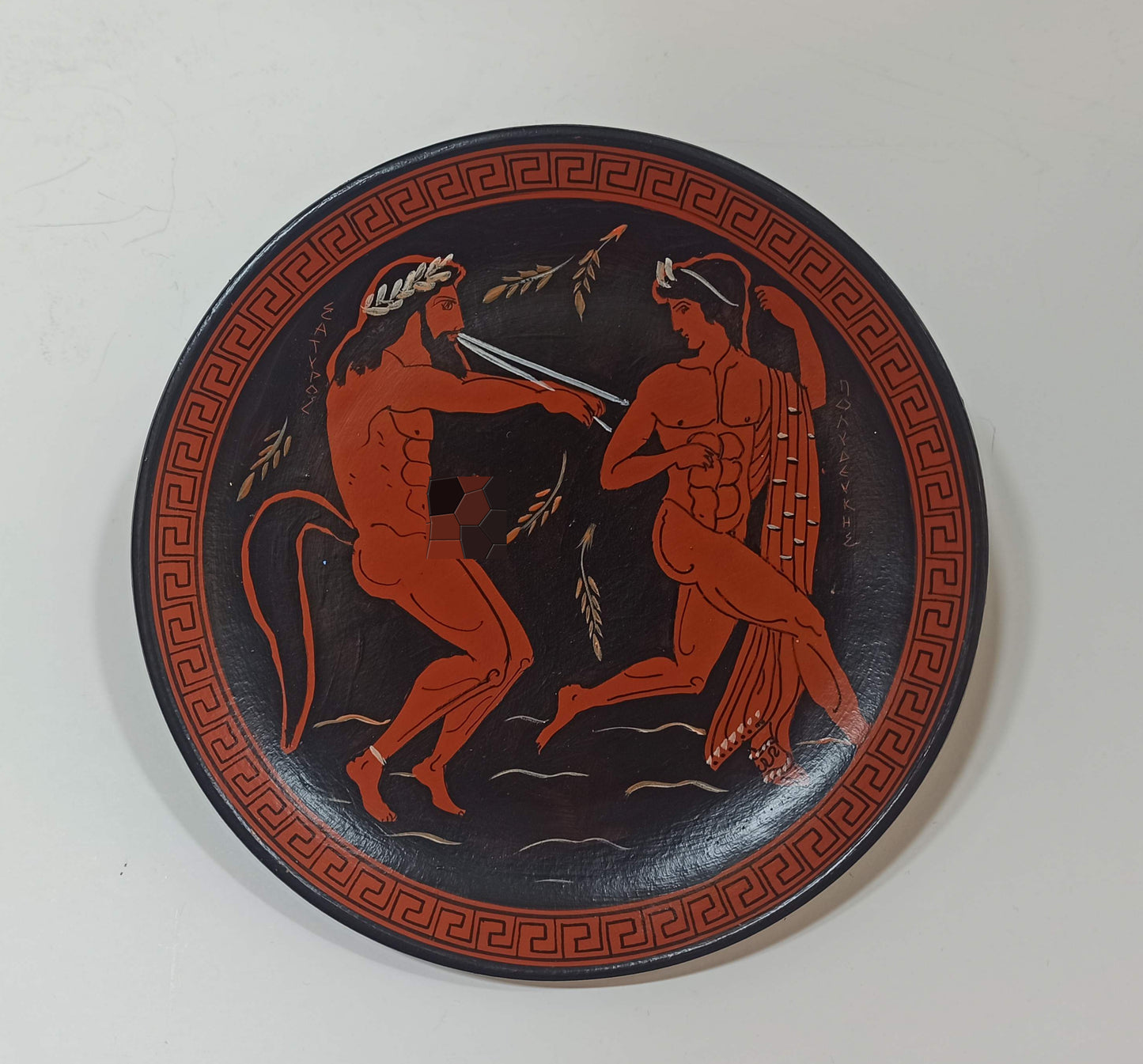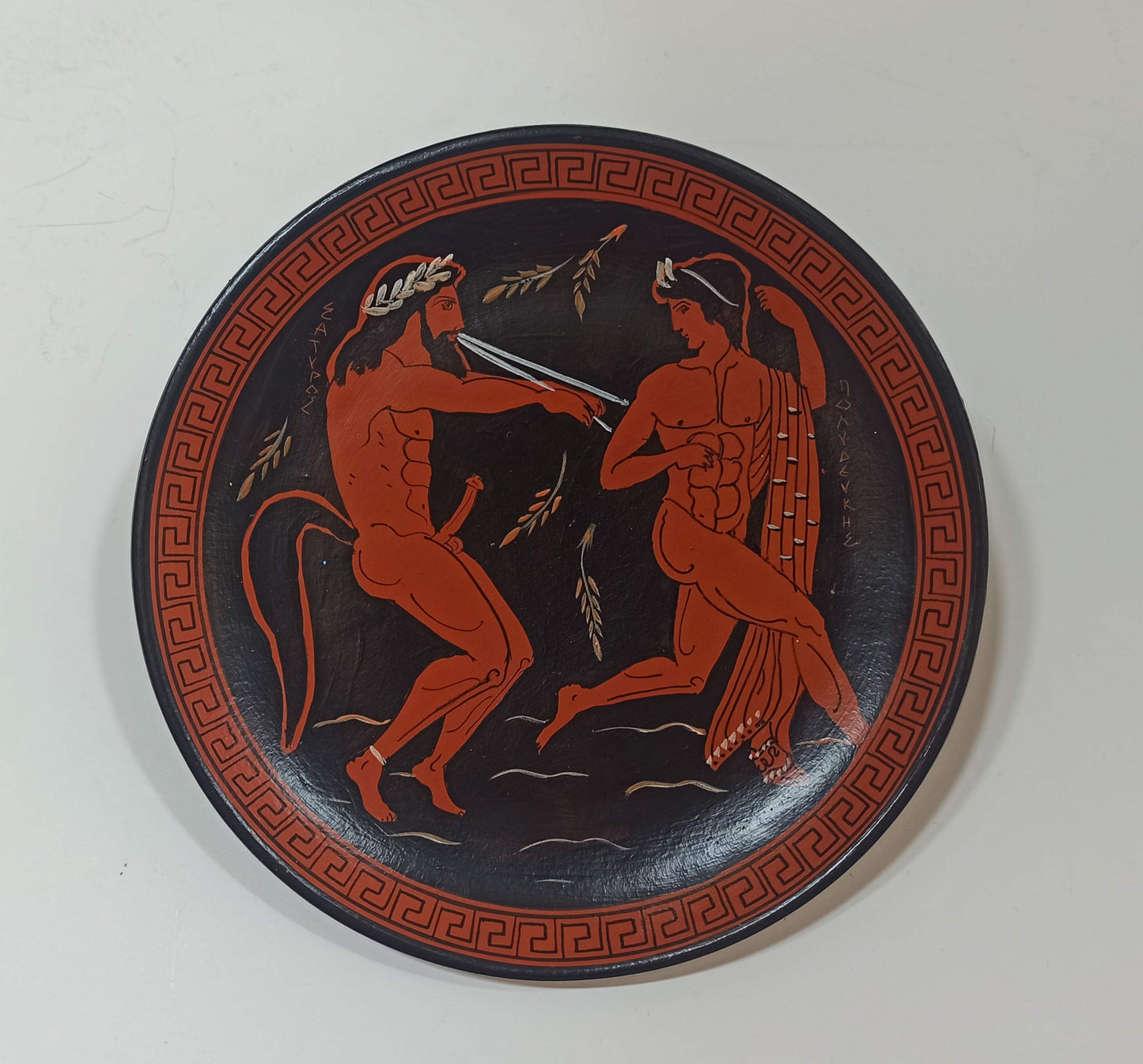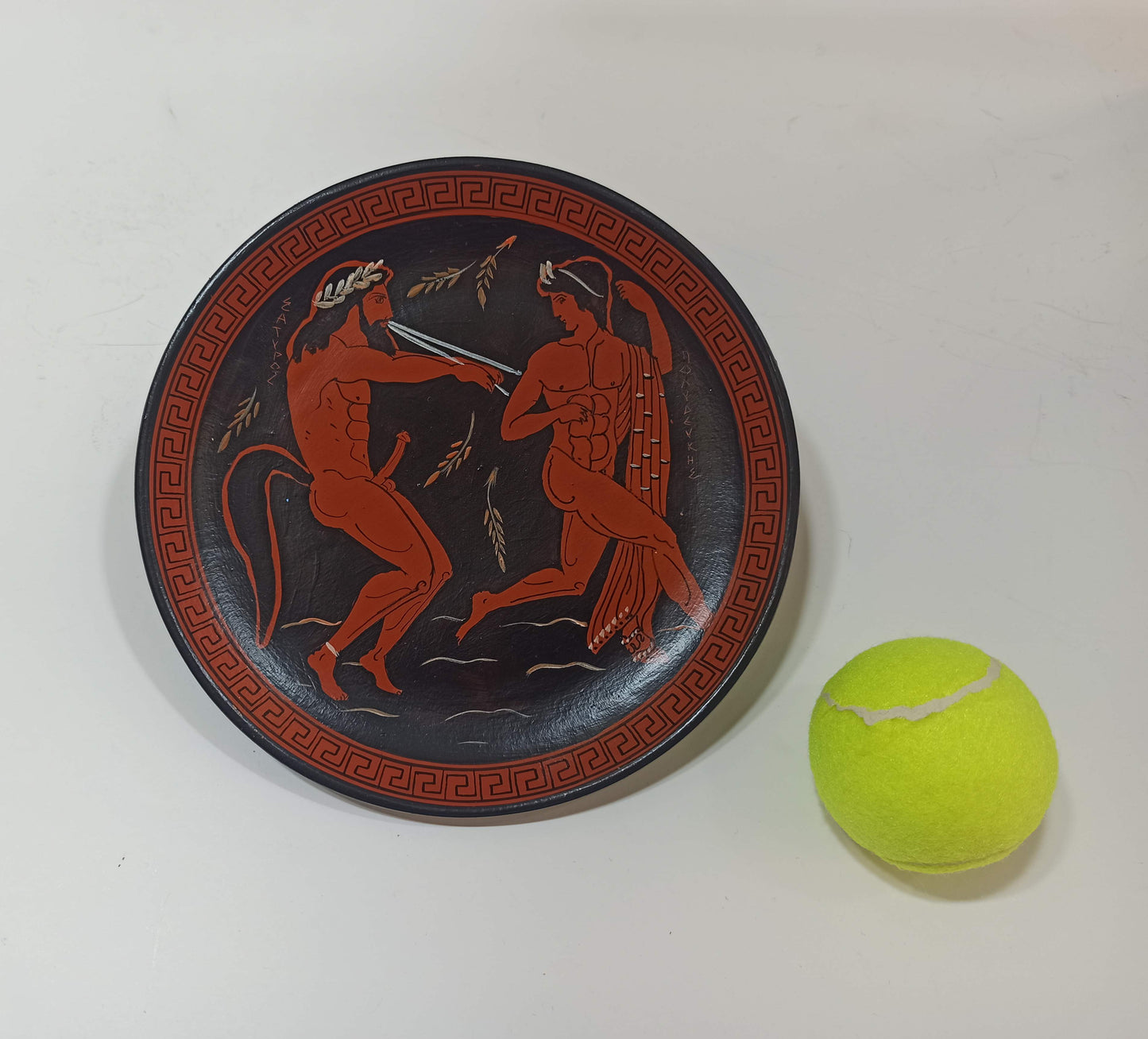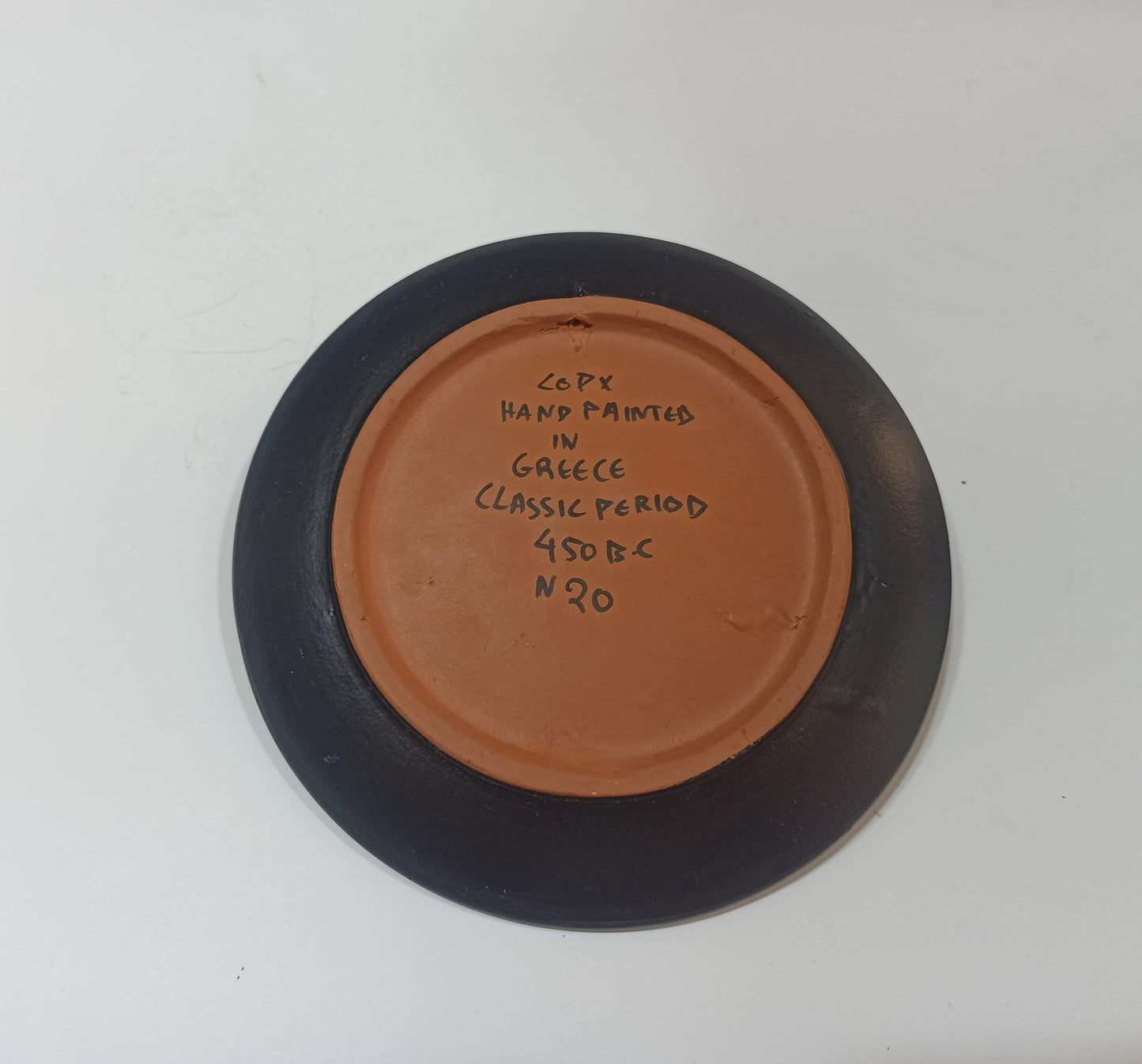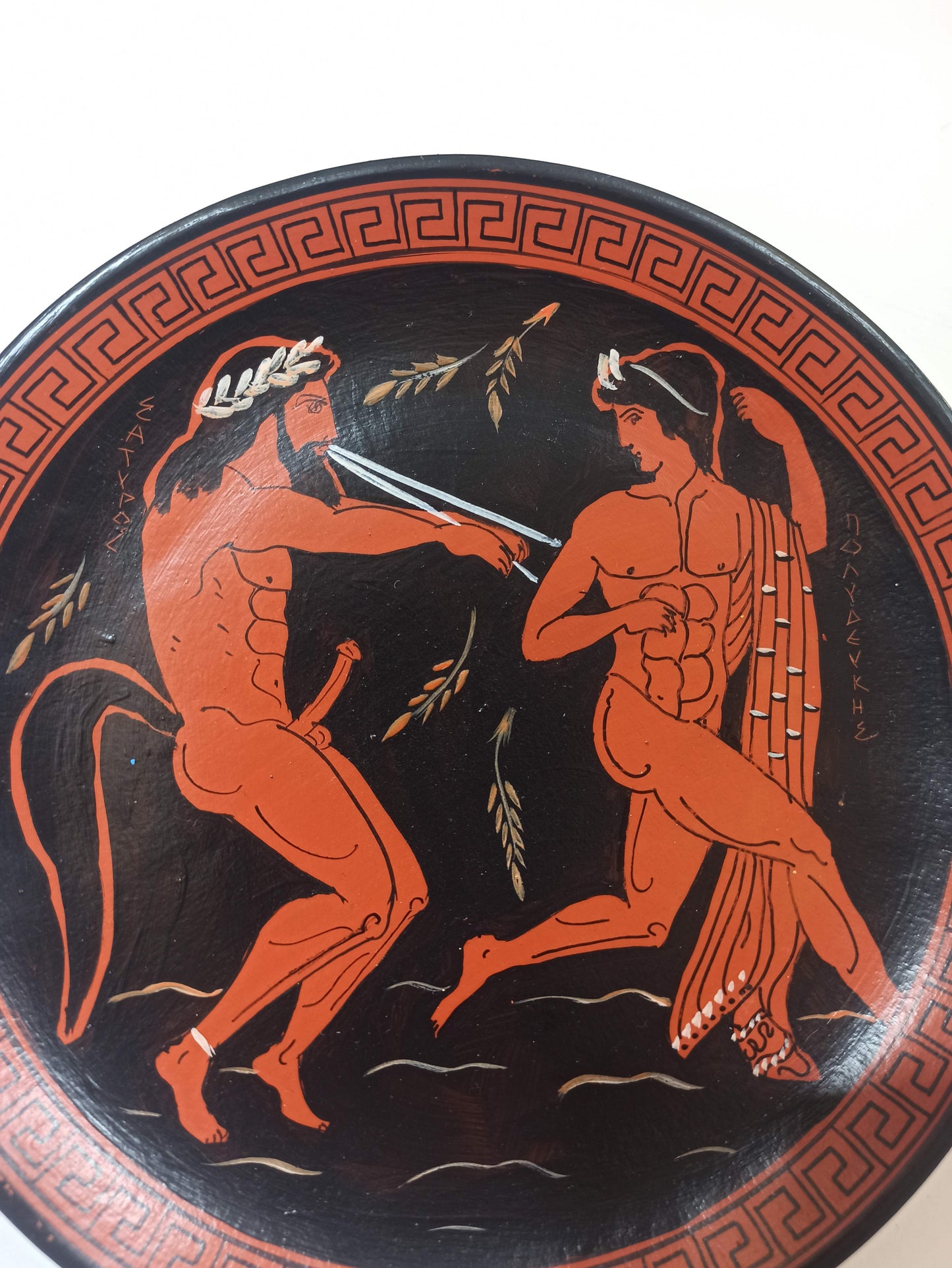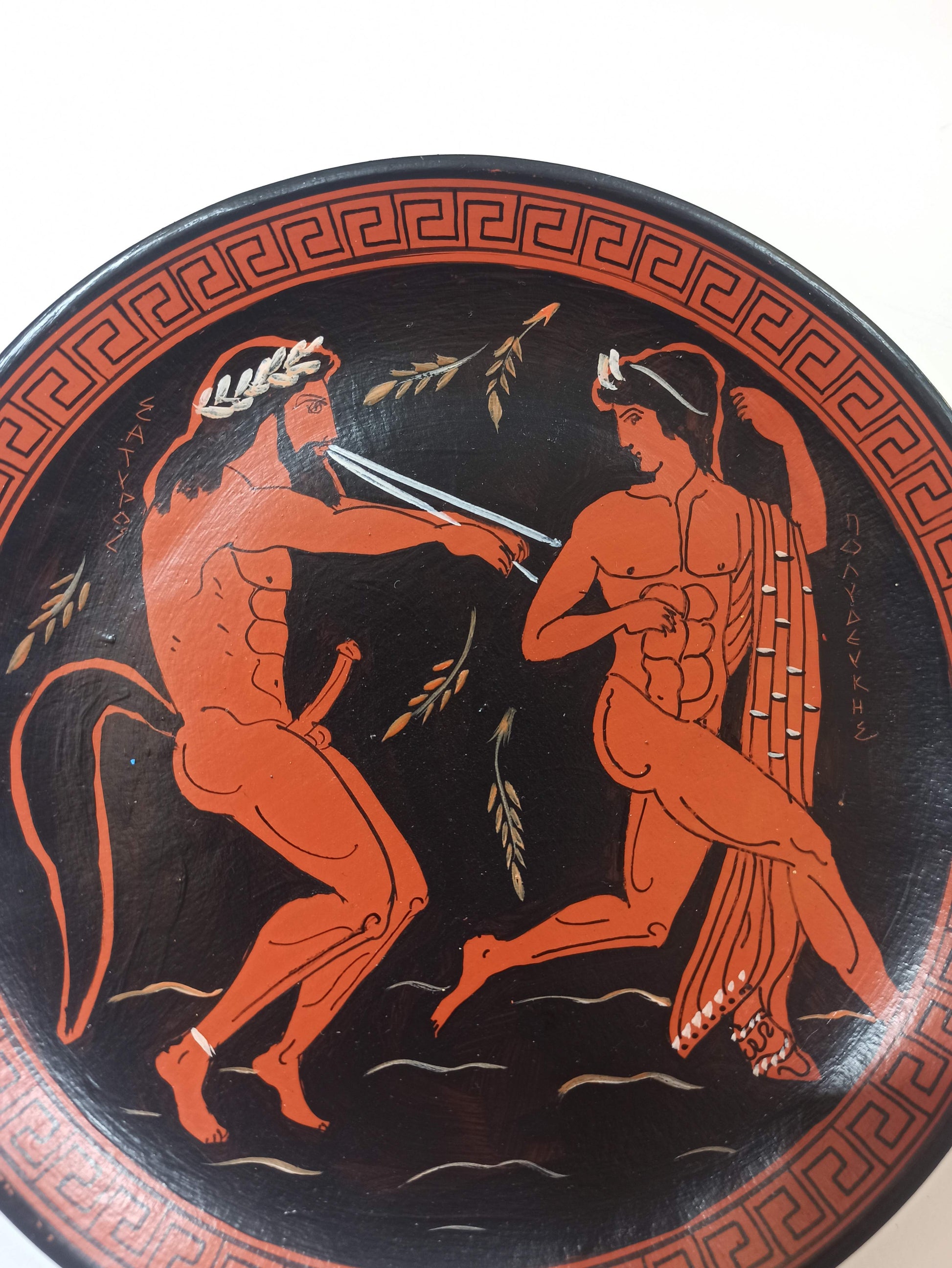Gallery Demeter
Satyr - Male woodland creature, Goat-Human Hybrid - Pollux Polydeukes - One of the Dioscuri, heroic twin brothers - Ceramic - Handmade
Satyr - Male woodland creature, Goat-Human Hybrid - Pollux Polydeukes - One of the Dioscuri, heroic twin brothers - Ceramic - Handmade
Regular price
€79,90 EUR
Regular price
Sale price
€79,90 EUR
Unit price
per
Tax included.
Shipping calculated at checkout.
Couldn't load pickup availability
Condition: New, Handmade in Greece
Diameter: 20 cm - 7,9 inches
Weight: 350 g
Material: clay, paint, ceramic, terracotta
In Greek mythology, a satyr, also known as a silenus or silenos, is a male nature spirit with ears and a tail resembling those of a horse, as well as a permanent, exaggerated erection. Early artistic representations sometimes include horse-like legs, but, by the sixth century BC, they were more often represented with human legs. Comically hideous, they have mane-like hair, bestial faces, and snub noses and they always are shown naked. Satyrs were characterized by their ribaldry and were known as lovers of wine, music, dancing, and women. They were companions of the god Dionysus and were believed to inhabit remote locales, such as woodlands, mountains, and pastures. They often attempted to seduce or rape nymphs and mortal women alike, usually with little success. They are sometimes shown masturbating or engaging in bestiality.
In Greek mythology, maenads were the female followers of Dionysus and the most significant members of the thiasus, the god's retinue. Their name, which comes from μαίνομαι (to rave), literally translates as 'raving ones'. Maenads were known as Bassarids, Bacchae in Roman mythology after the penchant of the equivalent Roman god, Bacchus, to wear a bassaris or fox skin. Often the maenads were portrayed as inspired by Dionysus into a state of ecstatic frenzy through a combination of dancing and intoxication. During these rites, the maenads would dress in fawn skins and carry a thyrsus, a long stick wrapped in ivy or vine leaves and tipped with a pine cone. They would weave ivy-wreaths around their heads or wear a bull helmet in honor of their god, and often handle or wear snakes.
Castor and Pollux (or Polydeuces)—also known as the Dioscuri—were heroic twin brothers from Sparta. They were both sons of Leda, the queen of Sparta, though they had different fathers: Castor’s father was Leda’s husband Tyndareus, while Pollux’s father was Zeus, the king of the gods. The Dioscuri participated in a number of important heroic exploits, including the voyage of the Argonauts and the Calydonian Boar Hunt. They also saved their sister Helen when she was abducted by the Athenian king Theseus. One or both of the Dioscuri lost their lives in a battle with their rivals, the twins Idas and Lynceus. But Zeus granted them a qualified immortality, allowing them to alternate days between the Underworld and the heavens. As a result, the Dioscuri came to be regarded as gods throughout Greece. Worship of the Dioscuri eventually spread to Italy and Rome, where they were known as the Castores and became identified with the constellation Gemini.
ΜΠΑ Π20 Νο 11 ΣΑΤΥΡΟΣ ΠΟΛΥΔΕΥΚΗΣ - 15
Diameter: 20 cm - 7,9 inches
Weight: 350 g
Material: clay, paint, ceramic, terracotta
In Greek mythology, a satyr, also known as a silenus or silenos, is a male nature spirit with ears and a tail resembling those of a horse, as well as a permanent, exaggerated erection. Early artistic representations sometimes include horse-like legs, but, by the sixth century BC, they were more often represented with human legs. Comically hideous, they have mane-like hair, bestial faces, and snub noses and they always are shown naked. Satyrs were characterized by their ribaldry and were known as lovers of wine, music, dancing, and women. They were companions of the god Dionysus and were believed to inhabit remote locales, such as woodlands, mountains, and pastures. They often attempted to seduce or rape nymphs and mortal women alike, usually with little success. They are sometimes shown masturbating or engaging in bestiality.
In Greek mythology, maenads were the female followers of Dionysus and the most significant members of the thiasus, the god's retinue. Their name, which comes from μαίνομαι (to rave), literally translates as 'raving ones'. Maenads were known as Bassarids, Bacchae in Roman mythology after the penchant of the equivalent Roman god, Bacchus, to wear a bassaris or fox skin. Often the maenads were portrayed as inspired by Dionysus into a state of ecstatic frenzy through a combination of dancing and intoxication. During these rites, the maenads would dress in fawn skins and carry a thyrsus, a long stick wrapped in ivy or vine leaves and tipped with a pine cone. They would weave ivy-wreaths around their heads or wear a bull helmet in honor of their god, and often handle or wear snakes.
Castor and Pollux (or Polydeuces)—also known as the Dioscuri—were heroic twin brothers from Sparta. They were both sons of Leda, the queen of Sparta, though they had different fathers: Castor’s father was Leda’s husband Tyndareus, while Pollux’s father was Zeus, the king of the gods. The Dioscuri participated in a number of important heroic exploits, including the voyage of the Argonauts and the Calydonian Boar Hunt. They also saved their sister Helen when she was abducted by the Athenian king Theseus. One or both of the Dioscuri lost their lives in a battle with their rivals, the twins Idas and Lynceus. But Zeus granted them a qualified immortality, allowing them to alternate days between the Underworld and the heavens. As a result, the Dioscuri came to be regarded as gods throughout Greece. Worship of the Dioscuri eventually spread to Italy and Rome, where they were known as the Castores and became identified with the constellation Gemini.
ΜΠΑ Π20 Νο 11 ΣΑΤΥΡΟΣ ΠΟΛΥΔΕΥΚΗΣ - 15
